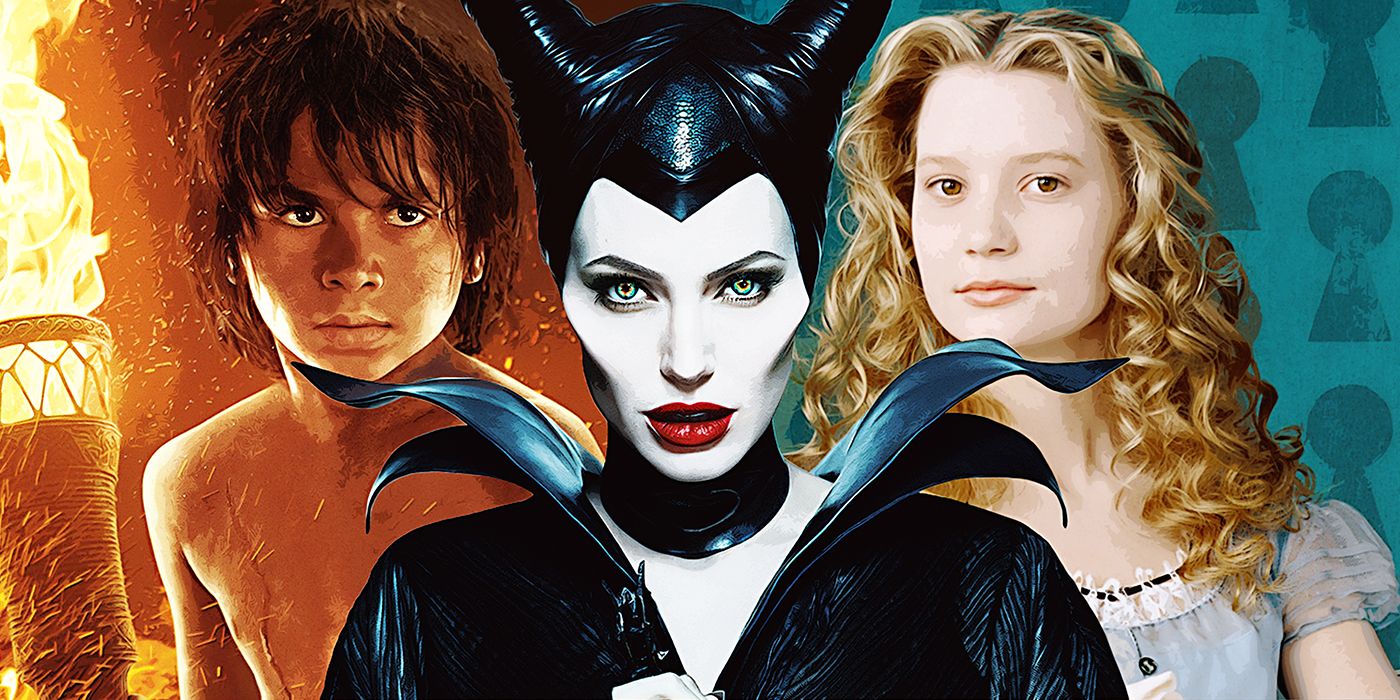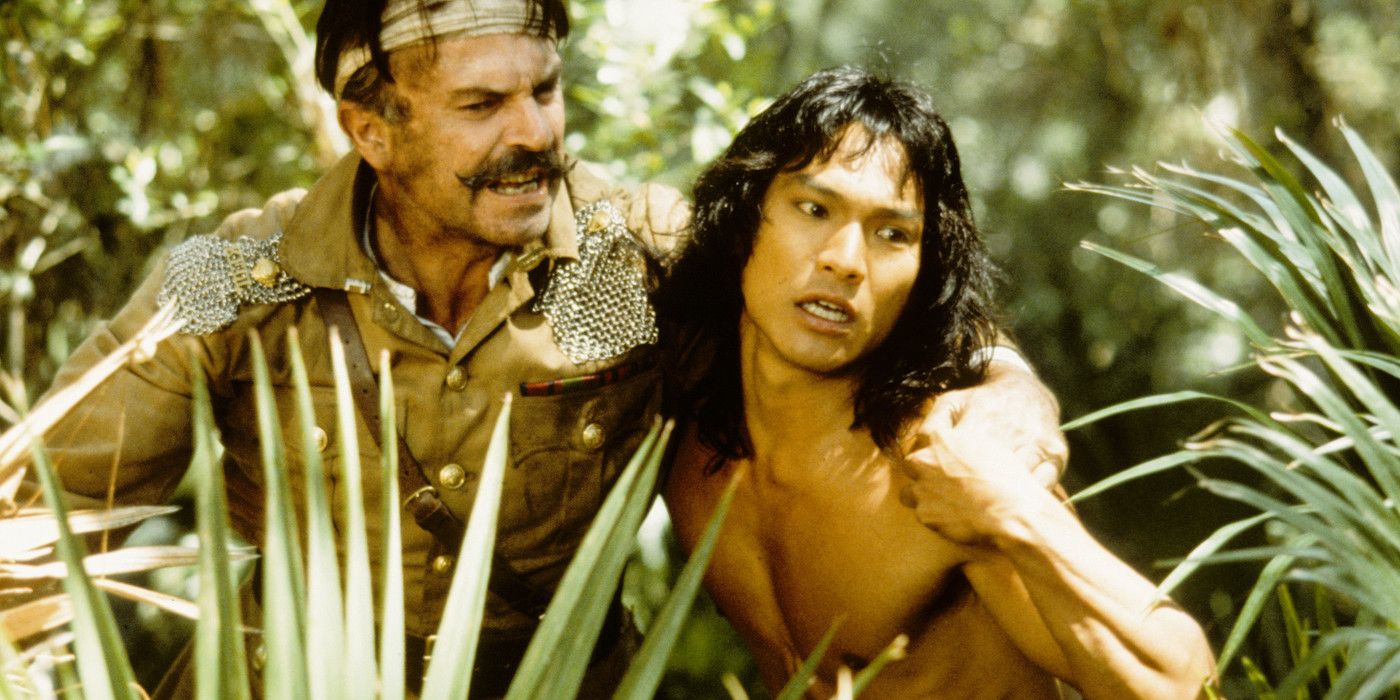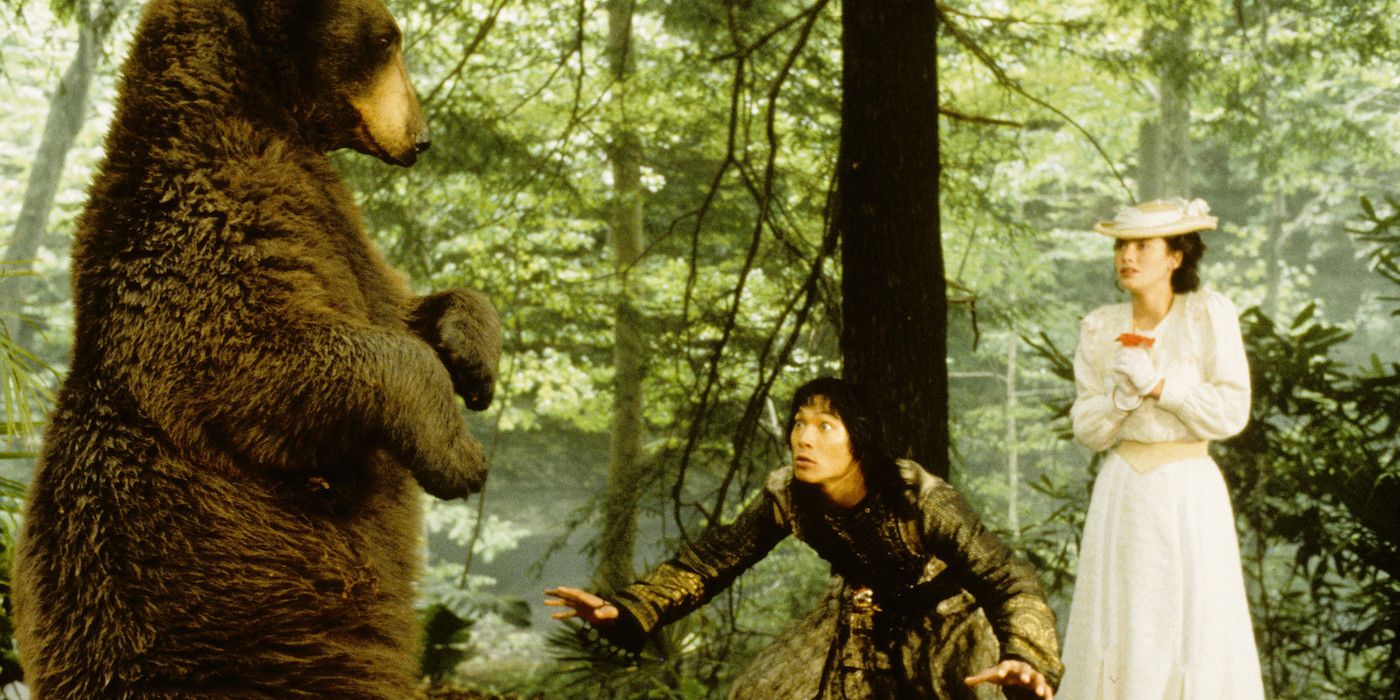It never fails: when talking about Disney’s incessant live-action remakes of their animated library, everyone agrees that it’s a terrible trend…only to start discussing either which cartoon they want to see remade next, or which one to date they like most. I have to bow out of the conversation at that point; I’d rather watch reruns of Quack Pack than sit through another of these bloated exercises in cynical nostalgia mining, and “like” is a strong word. For a little while after leaving the theater in 2016, I might have given The Jungle Book as an answer to that latter question, but then I realized that I just like Bill Murray and Christopher Walken. Their charisma made an otherwise frustrating effort tolerable. But Disney had revisited Rudyard Kipling’s beloved tale once before Jon Favreau’s film (twice if you count The Jungle Book: Mowgli’s Story – but let’s not). Released in 1994, Rudyard Kipling’s The Jungle Book isn’t often mentioned in the same breath as the ongoing remake series.
Rudyard Kipling’s The Jungle Book hasn’t been mentioned much at all since it was in theaters, and given that the film isn’t on Disney+ and hasn’t gotten more than a perfunctory home video release, I rather suspect Disney would prefer the focus be on Favreau’s take. But the 1994 Jungle Book is so much more of a delight. Of course, a big reason for that is that it isn’t really a remake of the 1967 animated version.
What Is a Remake vs. an Adaptation?
Not everyone distinguishes between a remake and an adaptation of non-film source material that’s already been made into a movie before. But it’s worth noting the difference when comparing Rudyard Kipling’s The Jungle Book, directed by Stephen Sommers, with John Favreau’s Jungle Book and the other modern Disney remakes. Kipling wrote The Jungle Book as prose, and in adapting that prose into film, there are many options and considerations as to how best to translate the qualities of one medium into another, heavily influenced by whatever interpretation the director and screenwriter had when reading the source material. There are multiple ways to do that well, and five given adaptations of, say, The Three Musketeers, can all be impressive while bearing little resemblance to one another. In a straight remake, translation isn’t an issue. Cutting, casting, shot composition and musical scores might change, and scripts might be heavily revised, but there’s no need to figure out how to make the material fit the medium; it’s already been told in filmic language.
The modern Disney remakes occupy a bit of a gray area between the two. Most of Disney’s animated films are adaptations of fairy tales or literature, and as such, the live-action versions can be thought of as adaptations of the source material. But before they deal with the original stories, they deal with Disney’s cartoons. That’s one of the biggest problems with most of them; to watch them is to watch the Disney version of that particular story, again, only not as fresh and not as good. Favreau’s Jungle Book branches out a bit more than some, incorporating material from Kipling that Walt Disney didn’t use and some original ideas. But it primarily adapts the cartoon. It goes with the cartoon’s interpretation of Baloo as a lazy, loafing hedonist who adopts Mowgli, it has King Louie ruling over the Bandar-log, and it retains most of the Sherman Brothers’ soundtrack. But photorealistic animals can’t bring “The Bare Necessities” to life like a pile of drawings can, and attempting to fit that classic material in with an Inigo Montoya-style motivation for Mowgli was more than a little awkward.
Sommers’ Jungle Book has no such awkward marriage, and it doesn’t suffer in comparison to the cartoon. That’s because, other than having an orangutan nicknamed King Louie (after Mowgli assumes he stole his crown from the king of France) and a throwaway line about the bare necessities in a different context, it owes nothing to the cartoon. It’s an original adaptation from Kipling, with its own ideas, considerations, and interpretations. If the Disney logo wasn’t on it, a new viewer might never believe it was connected to the House of Mouse.
'Rudyard Kipling’s The Jungle Book' Wasn’t Developed In-house
What became Rudyard Kipling’s The Jungle Book was never meant to be a Disney movie. Indian-Kenyan producer Raju Patel had been developing his own adaptation of the stories, inspired by his own travels through India. He had a script prepared by Ronald Yanover and Mark D. Goldman, and he eventually partnered with another producer, Mark Damon. It was Damon who suggested targeting 1994 as a release date; it would be the 100th anniversary of The Jungle Book’s first publication. Damon also suggested going to Disney for half the budget at the cost of the U.S. and other select distribution territories.
Sommers was hired after the project was acquired by Disney. But he maintained, quite publicly, that there was no way to match the studio’s beloved cartoon. Moreover, he didn’t see any way to do a straight adaptation of the source material, which is after all a collection of short stories with a loose connecting narrative of Mowgli’s growing up. That’s why, despite its title, Rudyard Kipling’s The Jungle Book has so much in it that doesn’t come from Kipling or from Disney. More is taken from the original stories than the cartoon; there’s the treasure hoard that awakens man’s greed, Mowgli’s entering human society only to return to the jungle, and the interpretation of some of the animals is closer to the short stories (though not all; more on that later). But these elements largely serve as take-off points for the type of story Sommers wanted to tell.
One of Sommers’ chief inspirations in making The Jungle Book was his directing idol, Michael Curtiz, master of the Old Hollywood adventure film. And that’s exactly what the 1994 Jungle Book is. It opens and closes with narration by an original character, Colonel Brydon (Sam Neill), whose platoon was once guided by Mowgli’s father. Rather than the foundling of Kipling or Walt, this film’s Mowgli is old enough to talk, flirt with the colonel’s daughter Kitty, and learn his letters before his father is killed by Shere Khan and he is lost and presumed dead. He and his pet wolf cub are led to a wolf pack by Bagheera; a baby Baloo joins the family when Mowgli saves him from a tree stump. And as soon as Mowgli enters the jungle, he grows up into Jason Scott Lee, finds the treasure guarded by King Louie, and returns to human society to romance Kitty (Lena Headey) and square off against humans who want the jungle treasure.
Stephen Sommers Created a Jungle Book All His Own
The brisk pace at which The Jungle Book's first act unfolds is a telltale sign of Curtiz’s influence. So is the attention paid to character. None of the cast here is incredibly deep, but they are all clearly defined and lean into archetypes in Old Hollywood fashion. Lee’s Mowgli is a sensitive and noble wild man, Heady’s Kitty is a traditional but intelligent and outspoken love interest, and Neil’s Brydon is a well-intentioned but emotionally repressed British authority figure. John Cleese provides slightly pompous but good-natured and caring comic relief in the person of Dr. Julius Plumford. Jason Flemyng, Stefan Kalipha, and Ron Donachie all provide variations on slimeball henchmen. And Cary Elwes is the quintessential British villain: arrogant, prejudiced, greedy, lascivious, and overcompensating.
Unlike Disney’s cartoon, the animals in Sommers’ Jungle Book don’t talk. Had he made the film in 2016, I suspect that Sommers would have brought them to life the same way Favreau did, with CGI; he’s among the filmmakers who’s been most seduced by the technology into indulging in every excessive use of it possible. But that wasn’t an option in 1994, except for a terrible-looking CGI close-up on Kaa that doesn’t match either the real snake or the puppet used in other shots. Mowgli’s jungle friends are otherwise brought to the screen through trained animals. And frankly, the result is a much more lively and well-personified bunch of jungle-dwellers than audiences got in Favreau’s Jungle Book or Lion King remakes.
The panthers that portray Bagheera might not say a word or have any digital manipulation done to their faces, but careful editing and particular behaviors sell him as Mowgli’s stoic guardian. Baloo, presented here more as an amiable sidekick than a teacher or father, is still the heart of Mowgli’s jungle life, with the cinnamon bears playing him generating laughs and tears as they either collude with Lee to impress Kitty or take a bullet for him. Louie steals the show with his mugging, though some obvious bluescreen work suggests his material was largely shot away from his treasure hoard sets. And Sommers’ script revisions made an interesting effort to parallel the jungle world and civilization; Baloo is reflected in Cleese’s doctor, the elephants in Neil’s colonel (who hates them), and so on. I can’t say the attempt is wholly apparent without prior knowledge, but if you know what to look for, it’s fun to spot the connections.
The animal character most unlike Kipling or Walt is Shere Khan. In the original stories, Shere Khan might be feared, but he isn’t a particularly respected villain. There’s something underhanded and even pathetic about his crippled, grasping presence. Disney’s cartoon played up his haughtiness while fixing his leg and enhancing his woodland reputation. But Sommers’ Shere Khan is a noble beast, not a villain at all. He is counted as the lord of the jungle by man and animal alike, a lord who only strikes at humans when they violate jungle law by killing for sport. Mowgli’s dad is killed when other members of his party intrude on Shere Khan’s territory, and it’s a mark of Mowgli’s growth that he faces the tiger without fear and gains his acceptance. This is an interpretation I’ve not seen before or since, and it works quite well, though it helps that Elwes is on-hand to play the villain.
The British Empire is a character in the film too, and it’s one element that sets The Jungle Book apart from its old-time inspirations. I can’t imagine a Hollywood film of Curtiz’s era showing this much contempt for the British Raj. Kitty and Plumford are the only Brits who come out of this story looking good. Brydon tries to be fair and kind, but he doesn’t mind the details of his administration and is easily blinded by class and rank. Under his inattentive watch, Elwes and his crew get away with prisoner abuse and collusion with bandits and nearly get away with murder. And when Mowgli first enters civilization and runs afoul of the British soldiers, all the locals are happy to help him and hinder the Brits.
Some critics found all this too far afield from Kipling, and too similar to the likes of Indiana Jones. Perhaps they have a point. But in fusing the Kipling stories with old-time adventure pacing and some imperial satire, Sommers managed to create something that feels fresh when watching it. His extensive location work in India (among other places) looks gorgeous, a much more satisfying backdrop than his later, digital-laden movies. And his cocktail of a script gave this adaptation of The Jungle Book its own clear identity. You don’t have to worry when you watch this film that you’re getting a watered-down retread of Disney, or anyone else. You’re getting a wholly unique interpretation, one that is very easy to enjoy. So, while it isn’t really a remake if I have to give an answer to “Which live-action Disney effort do you like best,” it would unquestionably be this one. Just don’t expect me to volunteer any more cartoons to be subjected to the current remake indignity.



